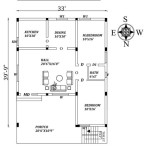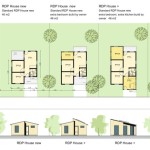Building Your Own House Planning Permission: Essential Aspects
Constructing your own home is a thrilling and rewarding endeavor, but navigating the planning permission process is crucial to ensure a smooth and successful build. Here are some essential aspects to consider:
1. Determine if Planning Permission is Required
Not all building projects require planning permission. However, major works such as extensions, alterations, and new builds generally do. Contact your local planning authority to verify if permission is necessary.
2. Understand the Planning Process
The planning process involves submitting a detailed application, including drawings, plans, and supporting documents. The application is reviewed by the planning authority, who will assess its impact on the surrounding area, traffic, and environment.
3. Prepare a Comprehensive Application
Your application should include:
- Site and building plans
- Design and specifications
- Environmental impact assessment
- Traffic impact study (if applicable)
4. Consult with Neighbors and Stakeholders
Before submitting your application, engage with neighbors and relevant stakeholders, such as local conservation groups. Their input can help mitigate potential objections and ensure a smoother approval process.
5. Understand the Fees and Timeframe
Submitting a planning application incurs a fee. The timeframe for processing an application varies depending on its complexity and the local planning authority's workload. Expect a response within 8-12 weeks.
6. Respond to Objections and Revisions
After reviewing your application, the planning authority may request modifications or further information. Be prepared to address any objections raised and provide the necessary documentation.
7. Seek Professional Advice when Necessary
If you encounter obstacles or have concerns, do not hesitate to seek professional advice from an architect, planner, or legal expert. They can provide valuable guidance and support throughout the planning process.
By following these essential aspects, you can navigate the planning permission process effectively, ensuring that your dream home is built on a solid foundation.

Guide To Building Your Own Home In Scotland Feasibility Vellow Wood Architects Glasgow And The Scottish Borders

Getting An Architect Planning Permission Property Guides

Building On Your Own Land In The Can You Get Planning Permission Urbanist Architecture Small Company London

How To Find An Architect In France Property Guides

Building Your Own Home In Spain Part 2 Architects And Planning Permission Property Guides

Beginners Guide To Self Build Plotbrowser

10 Steps To Building Your Own House Oakland Vale Architectural Designers For Oak Framed Self Build Homes Hastings East Sussex

Oak Frame Building Regulations Detail And S Oakmasters

Planning Permission A Quick Guide For Your Next Project Oakmasters

Pre Planning Old House Plan Plans Architectural And Home Design








